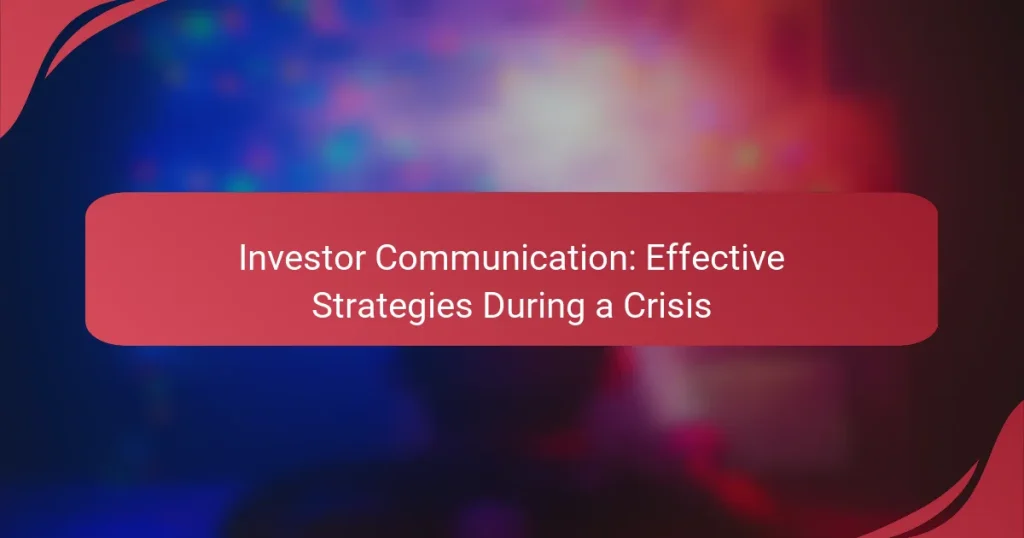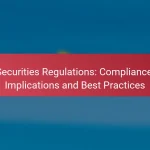In times of crisis, effective communication with investors is crucial for maintaining trust and confidence. Providing timely, clear, and honest information, along with empathetic messaging and data-driven insights, ensures that investors remain informed and engaged. Leveraging the right tools, such as virtual meeting platforms and real-time messaging, can further enhance the clarity and effectiveness of these communications.

How to communicate with investors during a crisis?
Effective communication with investors during a crisis involves providing timely, clear, and honest information. This approach helps maintain trust and confidence, ensuring that investors feel informed and engaged despite challenging circumstances.
Transparent updates
Transparent updates are crucial for keeping investors informed about the current situation and any changes that may affect their investments. Regularly share accurate information regarding financial performance, operational challenges, and strategic adjustments. This openness fosters trust and reduces uncertainty.
Consider using a structured format for updates, such as a weekly or bi-weekly report, outlining key developments and future expectations. This consistency helps investors anticipate changes and understand the company’s direction.
Regular check-ins
Regular check-ins with investors provide an opportunity for direct communication and feedback. Schedule calls or virtual meetings to discuss concerns, answer questions, and gauge investor sentiment. This proactive approach can help address issues before they escalate.
Establish a routine for these check-ins, such as monthly or quarterly meetings, to ensure that investors feel valued and heard. Personalizing these interactions can strengthen relationships and enhance investor loyalty.
Use of multiple channels
Utilizing multiple communication channels ensures that your messages reach investors effectively. Combine emails, webinars, social media updates, and dedicated investor portals to cater to different preferences and enhance engagement.
For instance, consider hosting a webinar to provide a comprehensive overview of the crisis response, followed by a Q&A session. This interactive format allows investors to ask questions in real-time, fostering a sense of community and transparency.

What are effective messaging strategies?
Effective messaging strategies during a crisis involve clear communication, empathy, and reliance on data. These approaches help maintain investor trust and provide necessary information in a timely manner.
Clear and concise language
Using clear and concise language is crucial for effective messaging. Avoid jargon and complex terminology that may confuse investors. Instead, focus on straightforward explanations that convey the essential information quickly.
For example, instead of saying “We are experiencing a temporary liquidity challenge,” you might say, “We currently have cash flow issues but are working to resolve them.” This clarity helps investors understand the situation without ambiguity.
Empathy and reassurance
Empathy and reassurance are vital in investor communication during a crisis. Acknowledge the concerns of your investors and express understanding of their feelings. This human touch can foster trust and loyalty.
For instance, you might say, “We understand that this is a challenging time for everyone, and we are committed to navigating these difficulties together.” Such statements can provide comfort and reinforce the relationship between the company and its investors.
Data-driven insights
Data-driven insights are essential for substantiating your messaging. Present relevant data that supports your statements and decisions, such as financial forecasts or market trends. This transparency can help investors feel more secure in their understanding of the situation.
Consider providing a summary of key metrics, such as cash reserves or projected revenue impacts, to give investors a clearer picture of the company’s health. For example, “Our cash reserves are currently at $5 million, which we believe will sustain operations for the next six months.” This approach helps investors make informed decisions based on factual information.
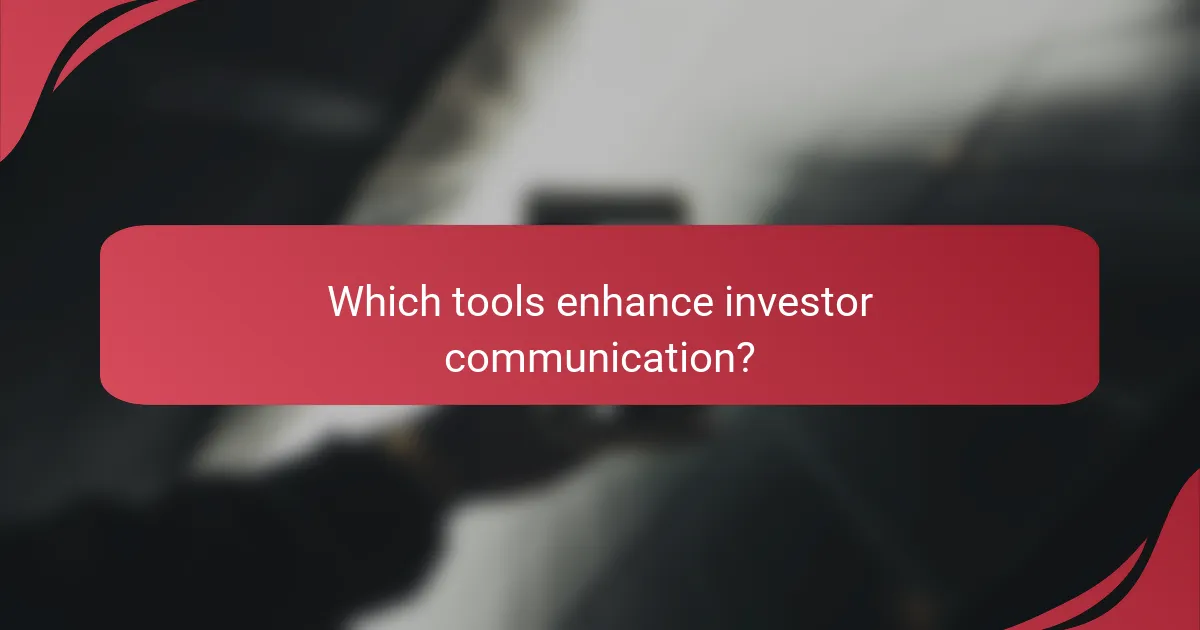
Which tools enhance investor communication?
Effective investor communication during a crisis can be significantly improved with the right tools. Utilizing platforms designed for virtual meetings, email updates, and real-time messaging ensures timely and clear information dissemination.
Zoom for virtual meetings
Zoom is a leading platform for virtual meetings, allowing companies to connect with investors face-to-face, even from a distance. It supports video conferencing, screen sharing, and recording features, making it ideal for detailed presentations and Q&A sessions.
When using Zoom, ensure you have a stable internet connection and familiarize yourself with the platform’s features beforehand. Schedule meetings at convenient times for your investors, considering different time zones if applicable.
Mailchimp for email updates
Mailchimp is a powerful tool for sending email updates to investors, enabling you to share important news and insights quickly. It offers customizable templates and analytics to track engagement, helping you refine your communication strategy.
To maximize effectiveness, segment your investor list based on interests or investment types and tailor your messages accordingly. Aim for concise updates, ideally keeping emails under 200 words to maintain attention.
Slack for real-time communication
Slack facilitates real-time communication with investors through instant messaging and organized channels. This tool allows for quick responses to inquiries and fosters a collaborative environment for discussions around urgent matters.
Consider setting up dedicated channels for specific topics or projects to streamline conversations. Be mindful of response times, as timely communication can enhance trust and transparency during a crisis.
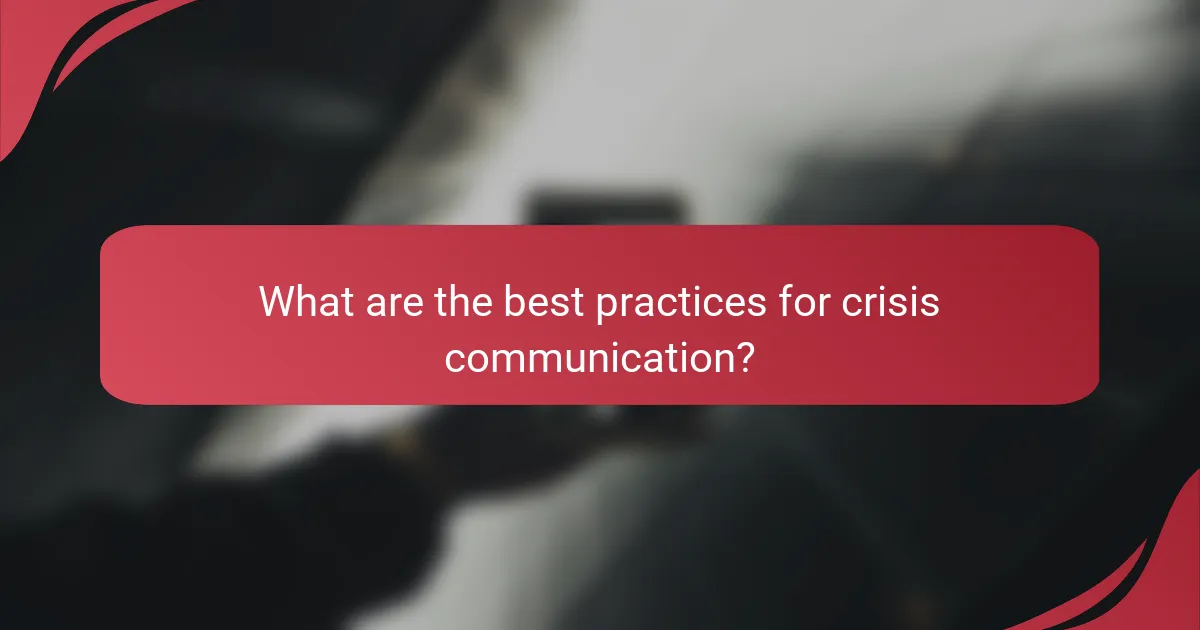
What are the best practices for crisis communication?
The best practices for crisis communication involve clear, timely, and transparent messaging to maintain trust and manage stakeholder expectations. Effective strategies include having a structured plan, a designated spokesperson, and a system to monitor feedback and adjust communications as necessary.
Establish a crisis communication plan
A crisis communication plan outlines the steps an organization will take during a crisis, ensuring a coordinated response. This plan should include key messages, communication channels, and roles for team members. Regularly review and update the plan to adapt to new risks and challenges.
Consider conducting crisis simulations to test the plan’s effectiveness. This practice helps identify gaps and prepares the team for real-life scenarios, enhancing overall readiness.
Designate a spokesperson
Choosing a spokesperson is crucial for delivering consistent and authoritative messages during a crisis. This individual should be well-trained, knowledgeable, and capable of addressing media inquiries and stakeholder concerns effectively. Ensure they have a clear understanding of the organization’s key messages and values.
Limit the number of spokespeople to avoid mixed messages. This approach helps maintain clarity and reinforces the organization’s commitment to transparency and accountability.
Monitor feedback and adjust
Monitoring feedback during a crisis allows organizations to gauge public sentiment and adjust their communication strategies accordingly. Use social media, surveys, and direct feedback channels to gather insights from stakeholders. This information can guide message refinement and help address emerging concerns.
Be prepared to adapt messages based on the evolving situation and stakeholder reactions. Quick adjustments can mitigate misunderstandings and reinforce trust in the organization’s leadership during challenging times.
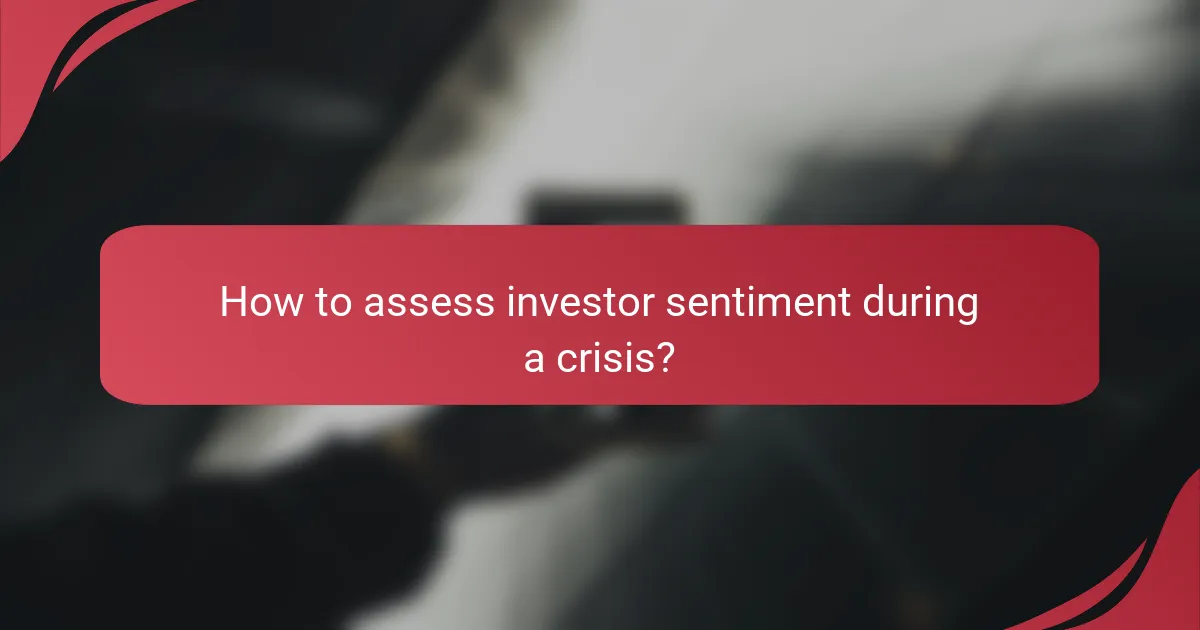
How to assess investor sentiment during a crisis?
Assessing investor sentiment during a crisis involves gathering real-time feedback to understand their concerns and expectations. This can help companies tailor their communication strategies effectively to maintain trust and transparency.
Surveys and polls
Surveys and polls are direct methods to gauge investor sentiment. They can be distributed via email or online platforms and should focus on specific concerns, such as financial performance, market conditions, or management decisions. Aim for concise questions to encourage higher response rates.
Consider using a mix of quantitative and qualitative questions. For instance, a scale from 1 to 5 can quantify sentiment, while open-ended questions allow investors to express their thoughts in detail. Regularly conducting these surveys during a crisis can provide ongoing insights into shifting sentiments.
Social media monitoring
Social media monitoring is essential for understanding real-time investor sentiment. Platforms like Twitter, LinkedIn, and financial forums can reveal how investors are reacting to news and events. Use tools that track mentions of your company and relevant keywords to gather data on public perception.
Pay attention to sentiment analysis tools that categorize posts as positive, negative, or neutral. This can help you identify trends and potential issues quickly. Engaging with investors on these platforms can also demonstrate responsiveness and build trust during turbulent times.
